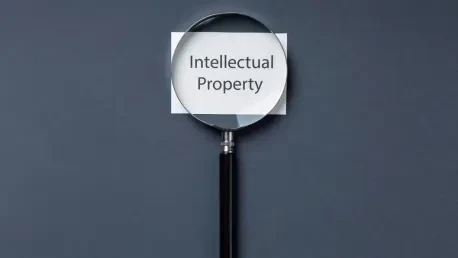As the realm of outer space becomes a new frontier for innovation and commerce, the intersection of intellectual property rights (IPRs) and space law is gaining critical attention. Today, we’re thrilled to speak with Desiree Sainthrope, a legal expert with extensive experience in drafting and analyzing trade agreements. With her deep knowledge of global compliance and a keen interest in emerging fields like intellectual property and AI, Desiree is uniquely positioned to shed light on how IPRs are shaping the future of space exploration and commerce. In this conversation, we’ll explore the growing importance of IP protection in space, the challenges of applying terrestrial laws to extraterrestrial activities, and the potential for new legal frameworks to address this uncharted territory.
Can you explain why intellectual property rights are becoming so crucial in the context of outer space?
Absolutely. As space exploration and commercial activities expand, we’re seeing an explosion of innovation—think satellite technologies, space tourism, and even resource extraction on celestial bodies. These activities involve significant investment and creativity, which naturally raises the need to protect inventions, branding, and original works. Without clear IP protection, companies and individuals risk losing the fruits of their labor to competitors or unauthorized use, especially in an environment where traditional legal boundaries don’t apply. The rapid growth of the private sector in space, with companies leading the charge, has only intensified this urgency, as profit motives now blend with scientific progress.
What specific activities in space are driving the demand for IP protection?
There are several key areas. First, you’ve got the development of new technologies for spacecraft, communication systems, and life-support mechanisms—these are often patented inventions. Then there’s space tourism, where branding through trademarks is huge; companies want to ensure their logos and slogans are protected, whether on Earth or a space station. Additionally, creative works like photographs, films, or scientific data logs created in space fall under copyright. Even potential mining operations on asteroids or the Moon raise questions about protecting proprietary methods or processes. Each of these activities represents a unique IP challenge in a domain where laws aren’t yet fully defined.
How do private companies in the space sector influence the need for IP frameworks?
Private companies are game-changers here. Unlike the state-driven space race of the past, today’s landscape is dominated by commercial players who are investing billions into space ventures. Their focus on profitability means they’re pushing for strong IP protections to safeguard their innovations and market positions. For instance, a company developing a unique propulsion system wants to ensure competitors can’t replicate it without permission, even if the tech is used in orbit. This commercial drive is forcing lawmakers and international bodies to rethink how IP laws apply beyond Earth, as these companies aren’t just exploring—they’re building businesses up there.
What are the primary types of IP rights relevant to space, and how do they function in that environment?
The main types mirror what we see on Earth: patents, trademarks, and copyrights. Patents protect new inventions, like a novel spacecraft component, giving the owner exclusive rights to prevent others from making or using it. Trademarks are vital for branding, especially in space tourism, where a company’s logo on a spacecraft or space hotel becomes a symbol of trust and identity. Copyright covers original works—think a photo taken from a lunar rover or a broadcast from a space station. The catch is that these rights are territorial, tied to specific countries on Earth, so applying them in space, where there’s no sovereignty, creates a legal gray area we’re still figuring out.
How do challenges with jurisdiction impact the protection of patents in space?
Jurisdiction is a massive hurdle for patents. Since patents are granted by individual countries, their protection typically stops at national borders. In space, where no country can claim sovereignty under the Outer Space Treaty, it’s unclear if a patent registered on Earth covers an invention used or infringed upon in orbit. For example, if a patented device is used on a spacecraft registered to a specific country, does that country’s patent law apply? There’s also the issue of enforcement—how do you stop someone from using your invention in space? These uncertainties make patent protection in space a complex puzzle.
In what ways are trademarks being utilized by space companies, particularly with the rise of space tourism?
Trademarks are becoming a big deal as space tourism takes off. Companies are using them to build recognizable brands, just like on Earth. Imagine a space station with a branded lounge or a spacecraft sporting a well-known logo—these trademarks help distinguish one provider from another in a competitive market. They’re not just about logos; slogans and even distinctive designs can be protected. The challenge lies in whether using a trademark in space counts as “use” under Earth-based laws to maintain registration, or if it generates goodwill for legal claims like passing off. It’s a new frontier for brand identity.
What unique issues arise with copyright protection for creative works produced in space?
Copyright in space is fascinating but tricky. It protects original works automatically upon creation, like a scientist’s log or a video shot from a space station. The issue is determining where that copyright applies since it’s tied to national laws. If a work is created in space, does the creator’s nationality dictate protection, or is it the spacecraft’s country of registration? International agreements like the Berne Convention help by extending protection across borders, but if a work is first published in space, defining the jurisdiction gets murky. These nuances are still largely untested.
How does the lack of a clear boundary for where outer space begins affect IP rights?
The absence of a universally accepted boundary—like the Kármán line at 100 kilometers, which isn’t legally binding—creates a real problem for IP. On Earth, IP rights are tied to territorial jurisdiction, so knowing whether an activity happens in a country’s airspace or in outer space matters for determining which laws apply. Without a clear line, it’s hard to say if an IP infringement occurred under a nation’s authority or in a legal no-man’s-land. This ambiguity complicates everything from patent enforcement to trademark use, as we can’t definitively categorize the location of the activity.
Can you elaborate on how the Outer Space Treaty influences whether Earth-based IP laws extend to space?
The Outer Space Treaty, signed in 1967, is a cornerstone of space law and indirectly impacts IP. It states that space isn’t subject to national appropriation, meaning no country can claim ownership over it. However, it also says that objects launched into space remain under the jurisdiction and control of the state that registered them. This implies that a spacecraft registered to, say, the UK, could be subject to UK laws, potentially including IP laws. The treaty doesn’t explicitly address IP, though, so there’s debate over whether this jurisdiction extends to protecting patents or trademarks onboard. It’s a starting point, but far from conclusive.
What happens if an IP right is infringed in space—can legal action be taken under Earth laws?
That’s a tough one. If an IP right is infringed in space, the possibility of legal action depends on how far Earth laws are interpreted to reach. If a spacecraft is registered to a specific country, that country’s laws might apply, meaning you could theoretically sue for infringement in that nation’s courts. For instance, the US has a law stating that inventions used in space on US-registered craft are treated as if used on US soil. But not all countries have such provisions, and enforcing a judgment in space is practically impossible right now. It’s a legal frontier with more questions than answers.
How does the US approach IP rights for activities in space compared to other countries?
The US has taken a proactive stance by explicitly addressing IP in space through legislation like Section 105 of the US Patent Act. This law treats any invention made or used in space on a US-registered spacecraft as if it happened on US territory, subject to US patent law, unless an international agreement says otherwise. Compare that to a country like Germany, which has modified its patent laws to apply to European Space Agency-registered modules, particularly for the International Space Station. Many other countries, however, lack specific provisions, leaving it unclear if their IP laws extend to space. The US approach provides more certainty, at least for its own jurisdiction.
If someone creates an invention or work in space, can it be protected under Earth-based IP laws?
Yes, in principle, IP created in space can be protected on Earth, but it depends on the type of right. For patents, an invention made in space can be registered on Earth if it meets the usual criteria like novelty and inventive step. The challenge is proving where and how it was created, and who owns it, especially if it’s tied to employment or international collaboration. Copyright is a bit easier since it’s automatic and often protected globally via treaties like the Berne Convention, based on the creator’s nationality. Trademarks conceived in space can also be registered on Earth. The bigger issue is whether space-specific circumstances might affect eligibility or enforcement.
What do you think the future holds for the development of IP laws in relation to outer space?
I believe we’re on the cusp of a major evolution in IP law for space. As activities like tourism, mining, and research grow, the pressure for international cooperation will mount. We might see new treaties or amendments to existing ones like the Outer Space Treaty to explicitly address IP protection and enforcement. There could be a push for a standalone system where IP rights are recognized in space independent of Earth registrations, possibly through a unified court or arbitration mechanism. The next decade will likely bring heated debates and innovative solutions as space becomes not just a frontier for exploration, but for law itself. What’s your forecast for how this legal landscape will unfold?









